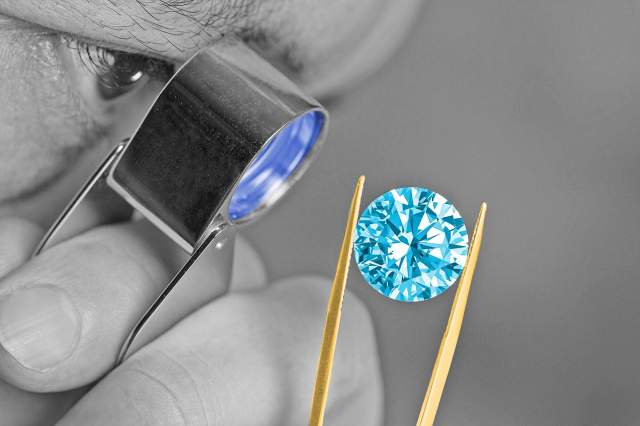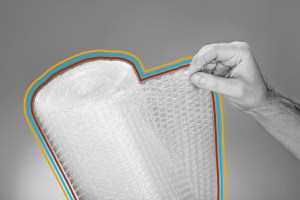
The First Diamond Engagement Ring Was Presented Nearly 550 Years Ago
Some historians believe ancient Egyptian couples were the first to exchange love-related bands, a practice eventually picked up by the ancient Romans. However, it wasn’t until 1477 that diamonds entered the picture. That year, Archduke Maximilian of Austria presented a diamond-bedazzled engagement ring to his future wife, Mary of Burgundy. Yet the diamond engagement ring trend wouldn’t trickle through all of society’s ranks until the early 20th century; as gems became more attainable, engagement rings often featured other precious jewels such as rubies, emeralds, and topaz, and were often picked based on the bride’s birthstone. Following the Great Depression, diamond monolith De Beers began marketing its stones as the ultimate symbol of love and commitment, a plan that would entirely change the jewelry-exchanging tradition.

Diamonds Are Used for More Than Jewelry
Not every diamond will make the journey from below the Earth’s surface to a jewelry store — in fact, many never do. Around 30% of mined diamonds are considered jewelry-quality; the remaining 70% are less-appealing diamonds called “bort.” But these stones aren’t discarded, because they still have many practical uses outside of jewelry; a diamond’s sturdiness makes it particularly suited for use in medical devices, electronics, and industrial tools. Dentists rely on diamond-encrusted drill bits that can easily bore through teeth. Similarly, the gemstones are embedded into saw blades and other tools to strengthen their cutting abilities and boost their longevity. Some scientists believe diamonds may even be a helpful material in electrical power advancements, possibly used as efficient, durable, and heat-resistant transistors (aka the mechanism that regulates electrical signals).

The World’s Largest Diamond Weighed More Than a Pound Before Carving
In 2021, the average engagement ring diamond clocked in at 1.5 carats, which is nearly microscopic when compared to the world’s largest known diamond. Called the Cullinan diamond (for Sir Thomas Cullinan, owner of the mine from where it came), the gem weighed in at 3,106.75 carats — about the size of a fist. It was pulled from the Premier Mine in South Africa in 1905, and eventually made its way to British King Edward VII, who arranged for the diamond to be cut by the Asscher Diamond Company in Amsterdam. Carving the precious stone was a massive feat; preparation took six months before the diamond was cut into nine large stones and 97 smaller ones. Several of the stones, which are among some of the largest and clearest diamonds ever unearthed, became part of the British crown jewels.
More Interesting Reads

Diamonds Can Actually Break
Diamonds are known for being particularly durable, though it is possible to damage one. Considered one of the toughest naturally occurring materials on the planet, diamonds are rated the maximum 10 on the Mohs scale, which ranks a mineral’s hardness when scratched. However, many jewelers warn that these virtually indestructible gemstones aren’t necessarily invincible; like any precious stone, diamonds have vulnerabilities. Inclusions — aka small imperfections deep within the stone, like cavities, specks, and cracks — can affect a diamond’s structural integrity, occasionally causing pressure to build up inside the stone. When hit in just the right way, the weakened gem can crack, chip, or break apart. Nearly all diamonds, even lab-grown versions, have some form of inclusion, though the odds of having a catastrophic break remain relatively rare.

Earth Had Diamonds Before Dinosaurs
In 1948, diamond company De Beers launched its famous marketing campaign: “A diamond is forever.” While the goal was to boost diamond sales following the Great Depression and World War II, the phrase touched on something we know about diamonds: They’ve been around for what seems like forever. All diamonds found on Earth are estimated to be between roughly 1 billion and 3.5 billion years old, making even the youngest diamonds older than dinosaurs. Some geologists believe the Earth’s diamond cache formed in the first couple billion years of the planet’s existence, though knowing for sure is particularly difficult because the stones can’t be carbon dated (carbon dating only works on organic material less than 60,000 years old). However, inclusions in diamonds can offer some clues; whenever the imperfections contain other minerals, researchers can better estimate the entire diamond’s age based on when its contaminant was once present on the planet’s surface.

There Are Diamonds in Space
Diamonds aren’t unique to Earth; they’ve also been found in the universe around us. Some are amazingly enormous — like the suspected star-turned-planet made entirely of diamond material, found nearly 4,000 light-years from Earth. It’s not the only celestial body with the gems, though; scientists have long suspected some planets in our own solar system experience diamond showers. Lightning storms on Saturn transform the planet’s methane gas into soot, which experiences enough pressure to likely transform into diamonds that then rain from the sky. Researchers have long suspected that a similar phenomenon occurs on Neptune and Uranus, where high temperatures and pressure combine to create diamonds that sink toward the planets’ cores. Space researchers have also discovered diamonds in meteorites, possibly created in ancient collisions between dwarf planets and asteroids before landing on Earth, where they continue to intrigue scientists as much as our own diamonds do.












